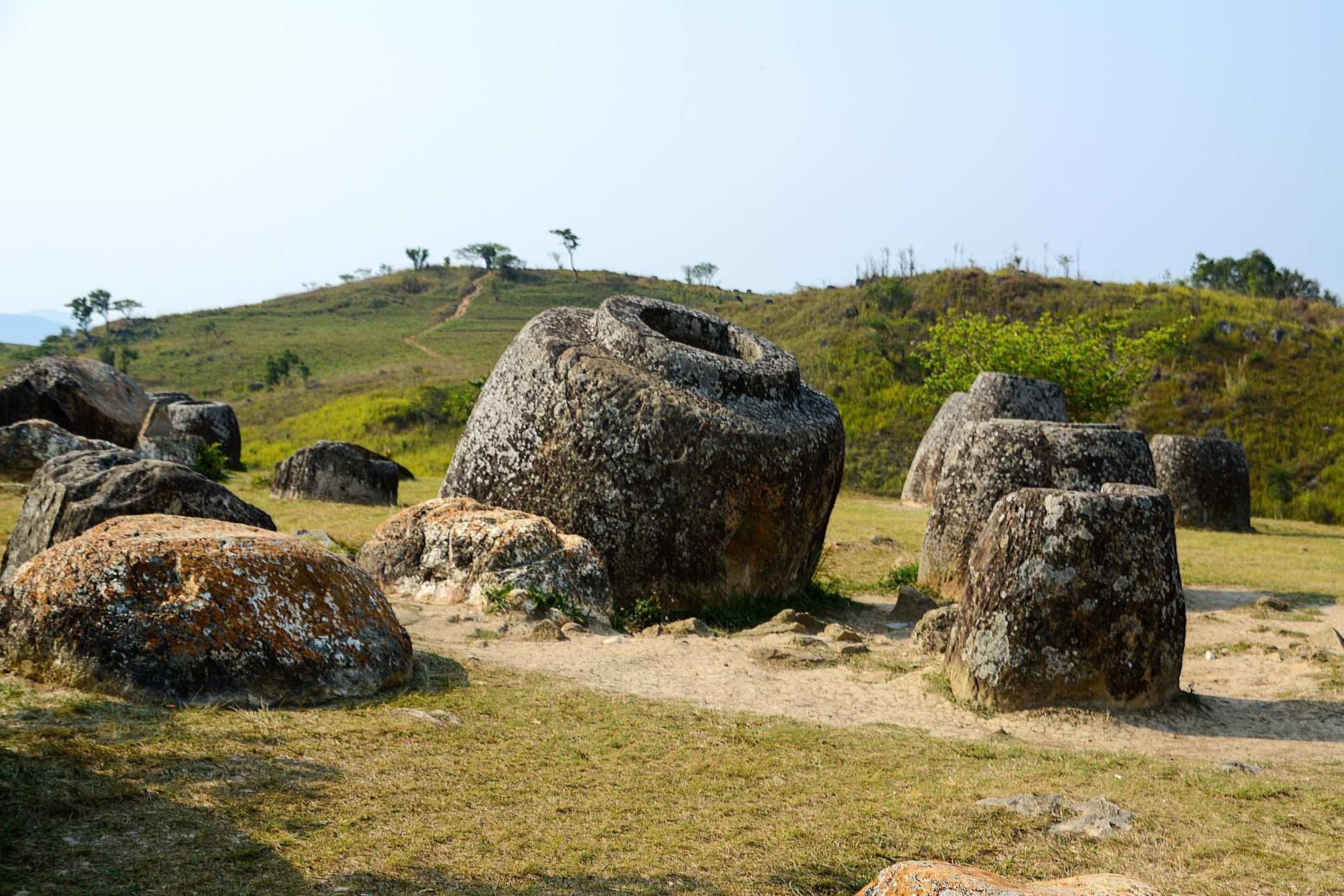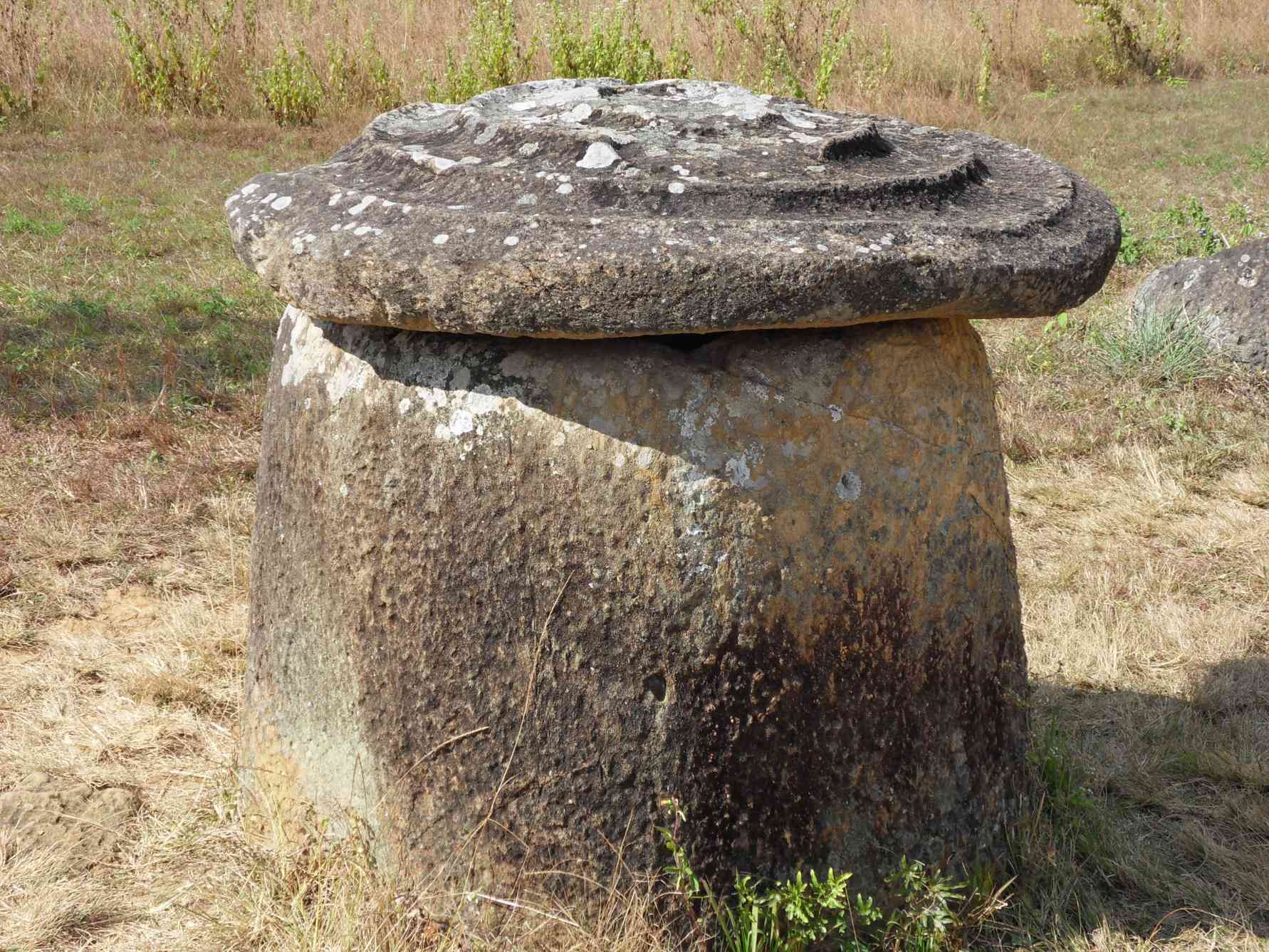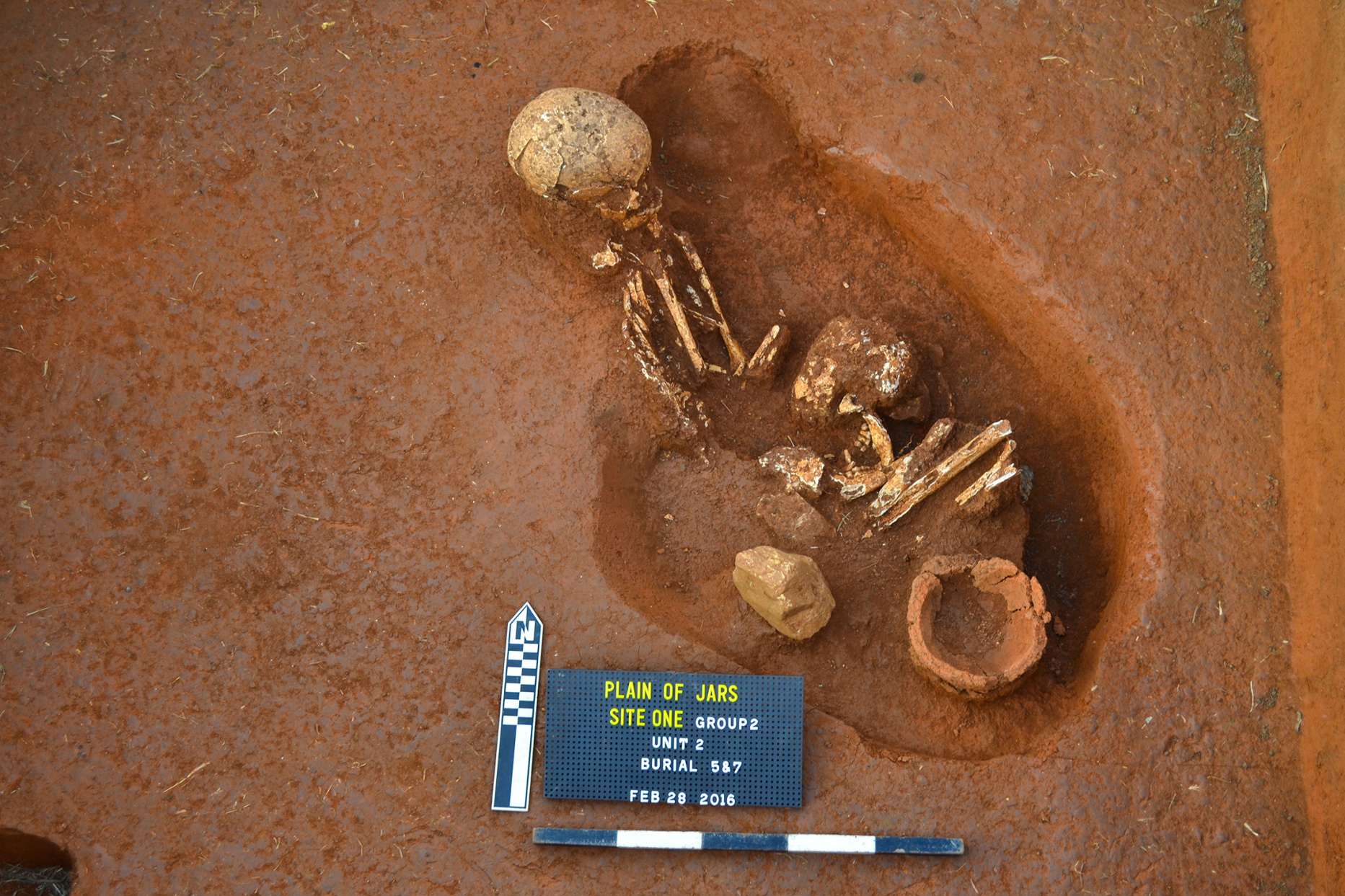The megalithic jar sites of Laos, often collectively referred to as the Plain of Jars, remain one of the most mysterious and least understood archaeological cultures in Southeast Asia. This vast area, covering more than 2,000 square kilometers, is littered with thousands of enormous stone jars, some weighing as much as fourteen tons. Despite decades of research, archaeologists are still puzzled by who put them there, and why. Was this a site for burials, or was it used for some kind of ritualistic purpose?

Similar to the Stonehenge in England, the origins of the Plain of Jars remains shrouded in mystery. The majority of these sites are found in Xieng Khouang Province, and while collectively termed the ‘Plain of Jars’, the sites are mostly located on mountain ridges, saddles, or hill slopes surrounding the central plain and upland valleys.
Carved of rock and cylindrically shaped, the predominantly undecorated jars – only one features a “frogman” etched into its exterior – vary in shape and size, though they are predominantly constructed of sandstone. Other materials used include breccia, conglomerate, granite, and limestone. The jars range from one to three meters tall.
Little is known about the people who carved the huge containers, and the jars themselves give little clue as to their origins or purpose. According to local Lao legend, the jars were created by a race of giants after winning a great victory in battle. The giants used the jars to brew and store lau hai, loosely translated to mean ‘rice wine’ or ‘rice beer.’

The cylindrical-shaped jars have a lip rim to support a lid, and range from one to more than three meters in height, weighing up to 14 tons. Very few examples of stone lids have been recorded, suggesting that the jars were most likely capped with perishable material.
After decades of speculation and research, a team led by two Australian researchers and one Laotian researcher has dated these jars. Using a fossil-dating technology known as Optically Stimulated Luminescence (OSL), the team examined sediment from underneath jars at 120 different locations, discovering that they were constructed sometime between 1240 and 660 BCE.

The function of the jars is still debated, with some archaeologists suggesting that they were prehistoric mortuary vessels, evident by the discovery of human remains, burial goods, and ceramics around the jars.
Some specialists claim that the effort required to have made so many jars suggests they were designed to capture rainwater during monsoon season and later boiling it for use by caravans passing through the region.
Another theory proposes that the jars were used as distilling vessels, where a body would be placed inside and left to decompose, which would then be removed to allow cremation or reburial of the skeletal remains.
In contemporary funerary practices followed by Thai, Cambodian, and Laotian royalty, the corpse of the deceased is placed into an urn during the early stages of the funeral rites, at which time the soul of deceased is believed to be undergoing gradual transformation from the earthly to the spiritual world. The ritual decomposition is later followed by cremation and secondary burial.
Researchers have also found beautifully-carved discs with geometrical images of concentric circles, human figures, and animals, all of which were discovered buried with their decorated sides positioned face-down. Some researchers claim they are probably burial markers.
The study originally published in the journal PLOS One. March 10, 2021.




